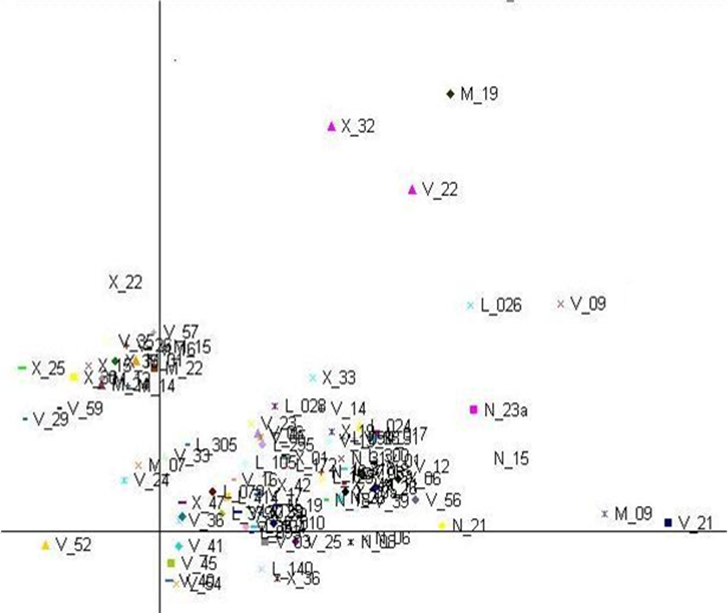Group (of witnesses)
There are several ways of grouping witnesses of a text without inferring anything about their genealogical relationships (so, they do not necessarily form a family). Witnesses can be grouped according to their external (codicological) features: their geographic origin, their age, their type (liturgical manuscript, erudite manuscript, etc.). They can also be grouped according to their similarities, either formal similarities (titles, layout, etc.), or the similarities in their variant readings, i.e. without considering whether those variants are secondary and significant or not. While those groupings might be useful, they do not lead to a stemma.
Many statistical methods consider similarities rather than genealogical relationships. For example, the chart below (Fig. 1) shows grouping of manuscripts based on their textual disagreements.
Illustration

Fig. 1. Multidimensional Scaling of manuscripts of Gregory of Nazianzus' Homily 27 (based on disagreements).
In other languagesDE: Gruppe
FR: groupe (de témoins)
IT: gruppo
CM